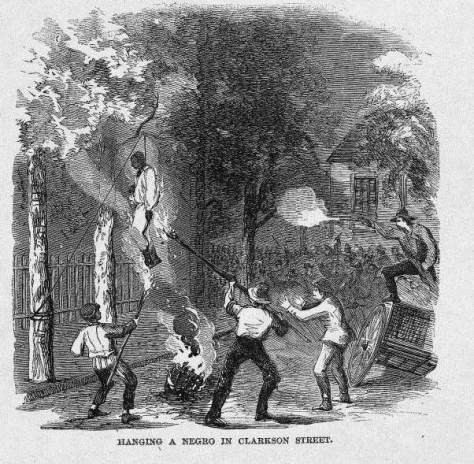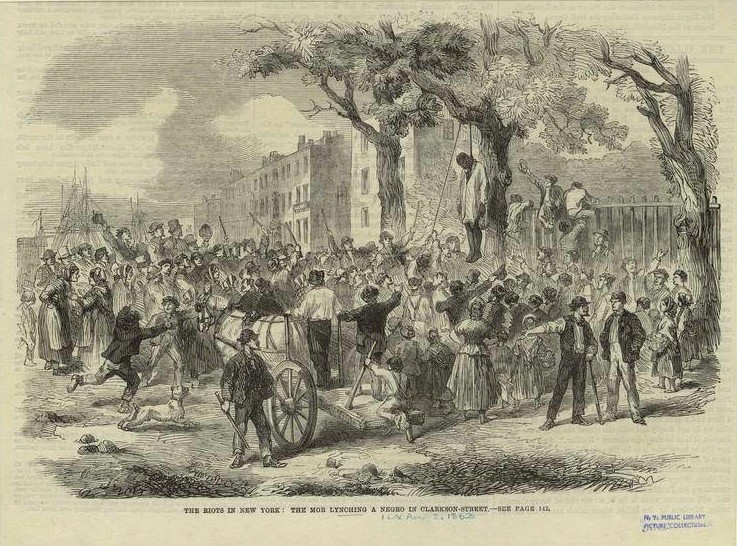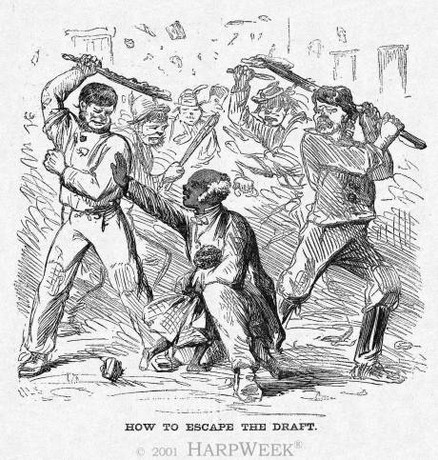Lynchings During the New York Draft Riots
Introduction
Text-to-speech Audio
Images
Drawing of the lynching of William Jones

Another drawing of the Jones lynching

Cartoon posted in the newspaper Harper's Weekly after the draft, depicting a mob beating an elderly Black man

Backstory and Context
Text-to-speech Audio
During the Civil War,
tensions were very high between Irish immigrants and African Americans in New
York City. When Abraham Lincoln passed the Emancipation Proclamation in the
beginning of 1863, many poor northerners viewed it as a betrayal. Many
felt that Lincoln expected the poor to fight and die to free African Americans
still enslaved in the south, and if the Union Army was successful in freeing
them, they were worried that the free Blacks would move north and take jobs
held by white immigrants.
These tensions boiled over on July 13, 1863, when a riot
broke out at a draft office on 3rd Avenue and 47th Street, and mobs soon began
dispersing across Manhattan. The mobs burned down many structures, including
the Colored Orphan Asylum, the Bulls Head Hotel, and numerous police stations.
During the riot’s first couple of days, the mobs met little opposition, mostly
police officers as the city didn't have any federal militia on hand at the time.
The riots soon took a racial turn as the mobs began targeting
African Americans, brutally beating and battering them. Soon, the lynchings began.
Many free Blacks were dragged through the streets, set alight, and hung from
the nearest tall structure such as a lamppost or tree. The mobs killed a Black
coachman on West 27th Street, and then chased three Black men down Varick
Street, though those men were able to get away.
The next man that the same mob found was not so lucky.
William Jones was walking down Clarkson Street in West Manhattan when the mob
found him. An 1863 police report of the New York City Draft Riots took account
of the lynching of William Jones, saying, “They instantly set upon and
beat him, and after nearly killing him, hung him to a lamppost. His body was
left suspended for several hours. A fire was made underneath him, and he was
literally roasted as he hung, the mob reveling in their demonic act.”
The riots finally ended on July 16, when federal militia
finally entered the city and drove off the mobs by force. At the end of the
riots, over 100 people had been killed; of those, 11 were African Americans.
The riots caused many African Americans to leave the city, and the city's Black
population fell by twenty percent.
Sources
On This Day: New York City Draft Riots. N.p., n.d. Web. 07 May 2017. http://gvshp.org/blog/2011/07/13/on-this-day-new-york-city-draft-riots/
http://history1800s.about.com/od/civilwar/ig/New-York-City-Draft-Riots/Draft-Riots-had-Racial-Aspect...
